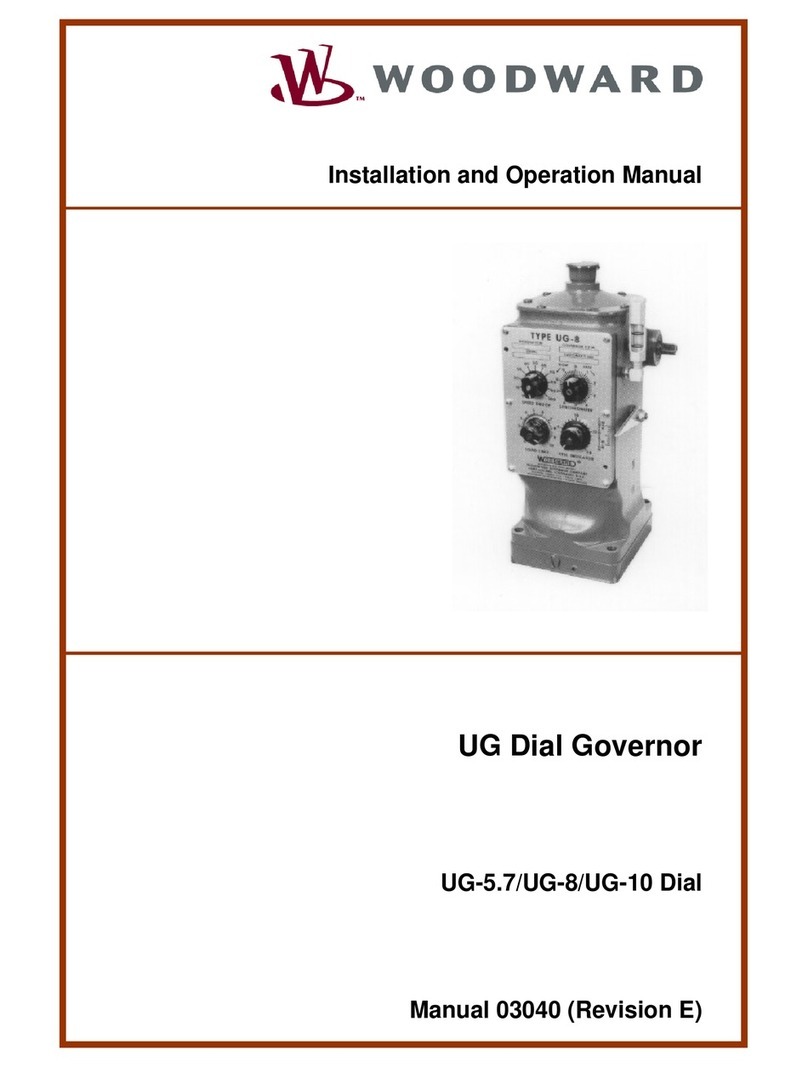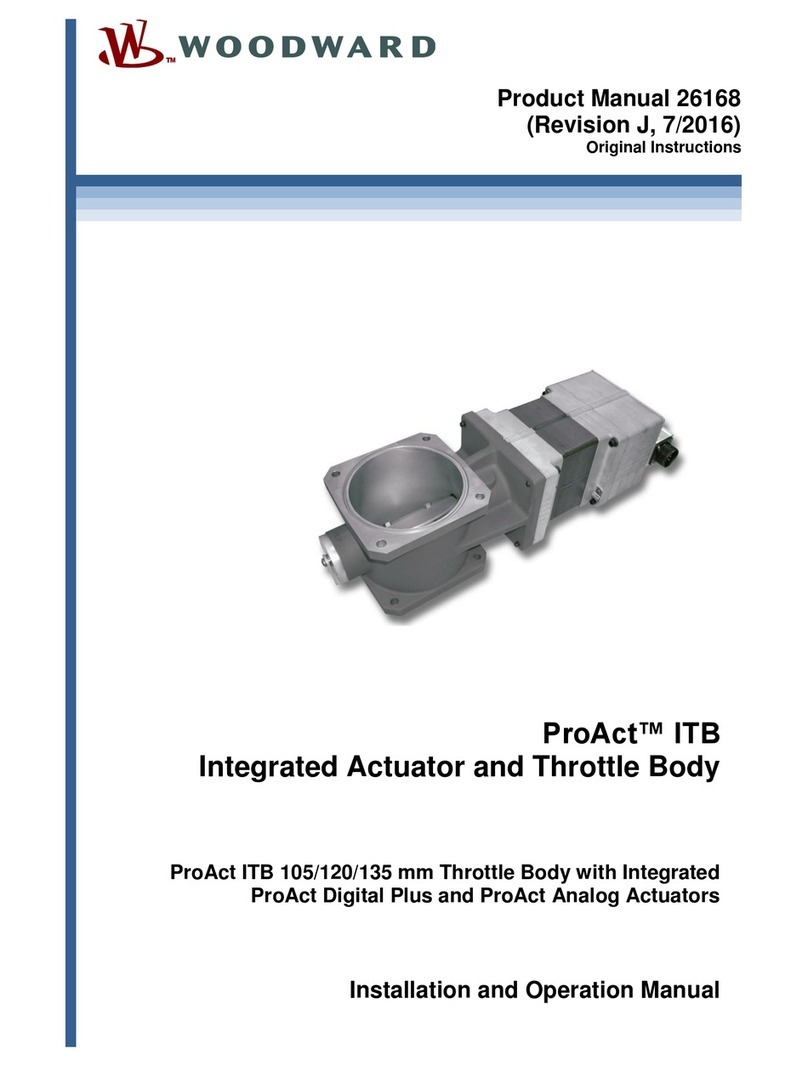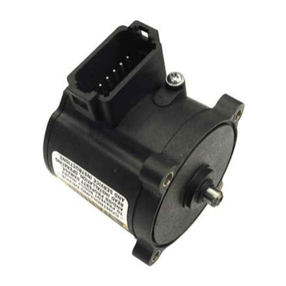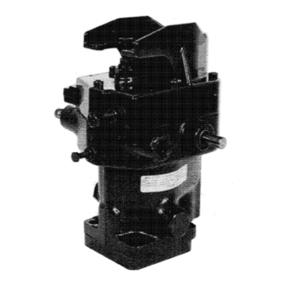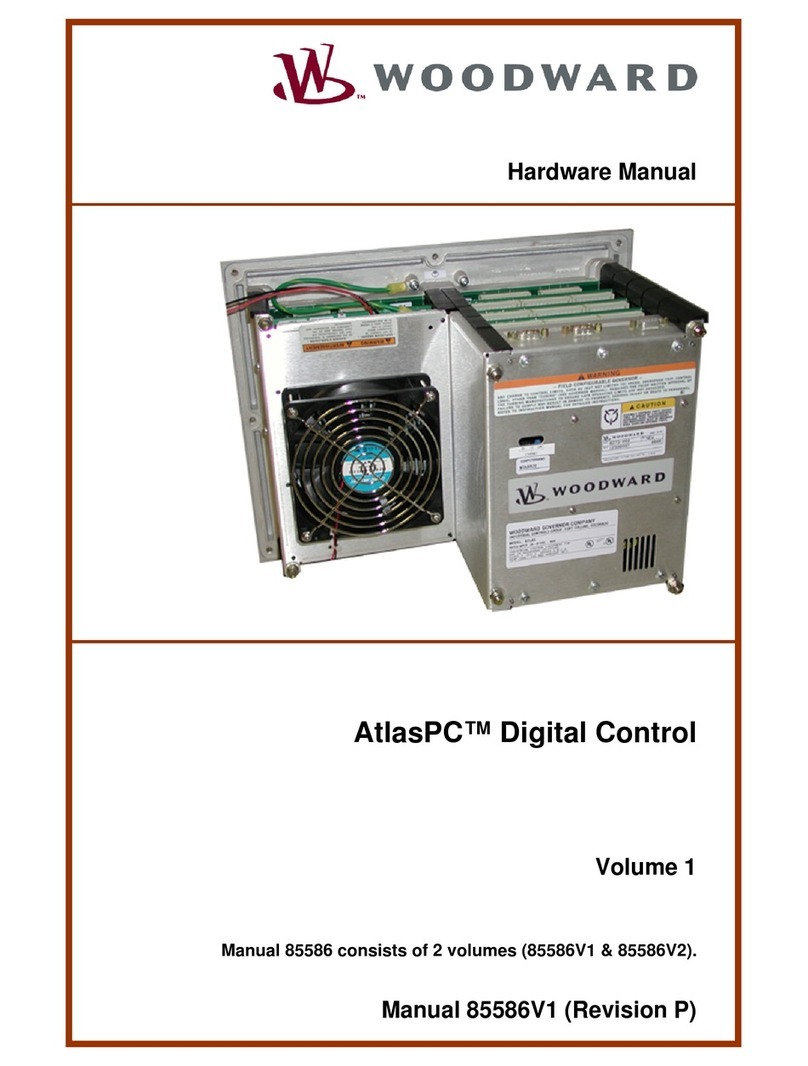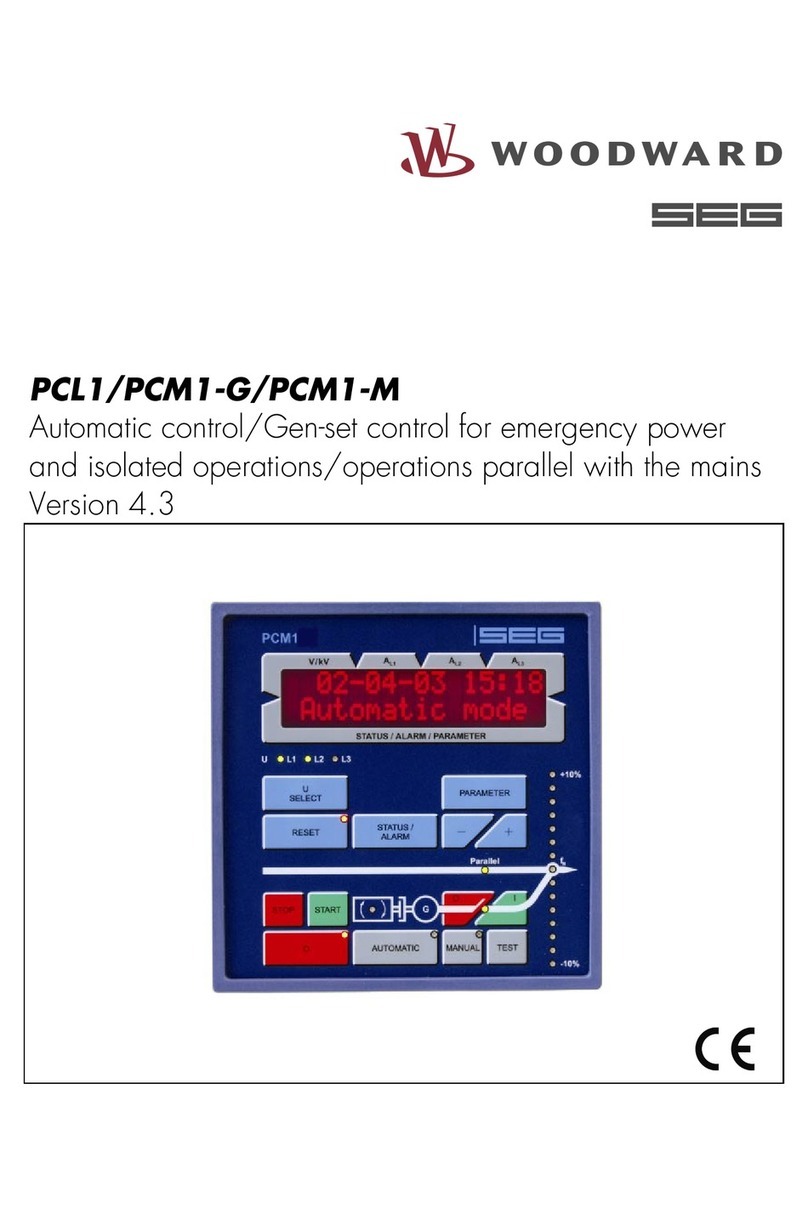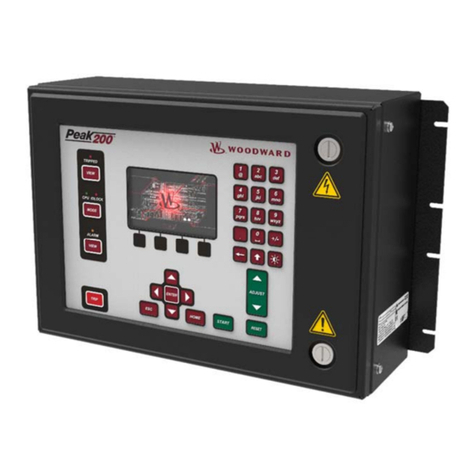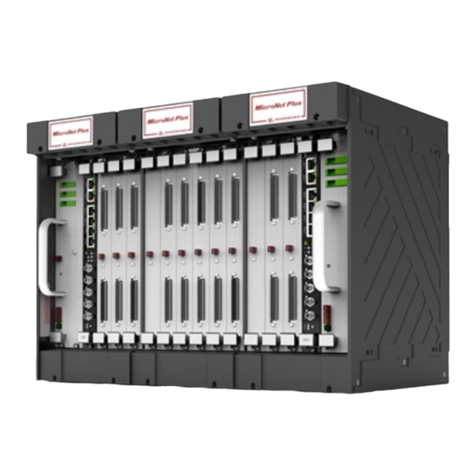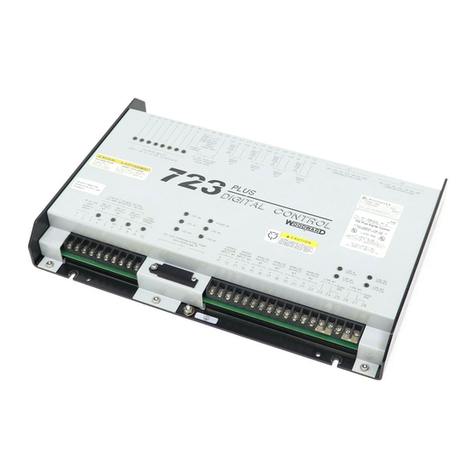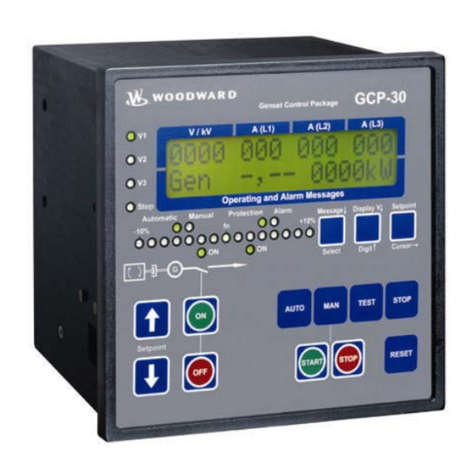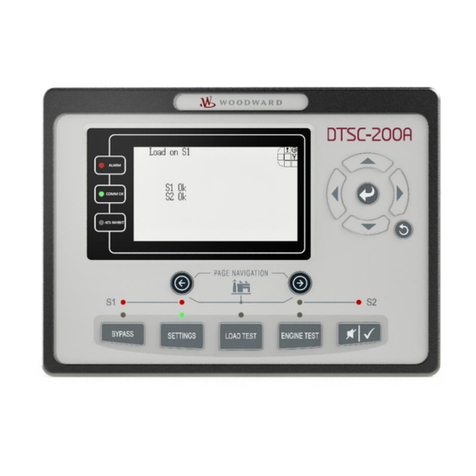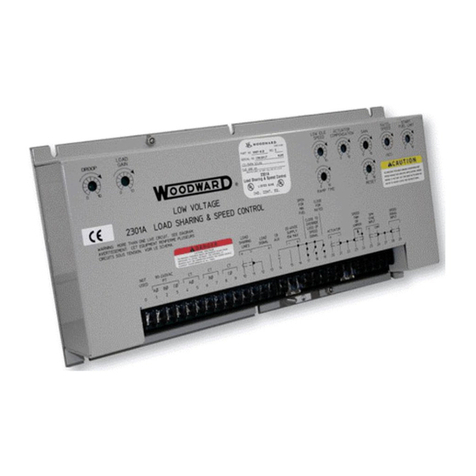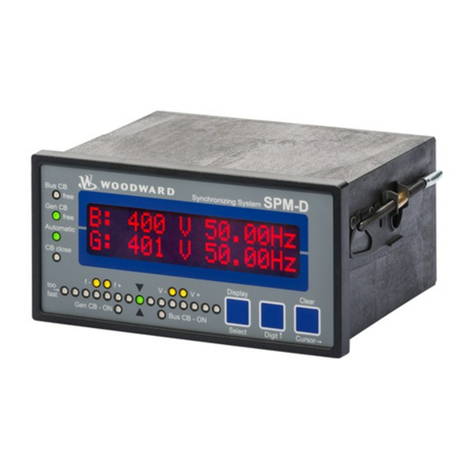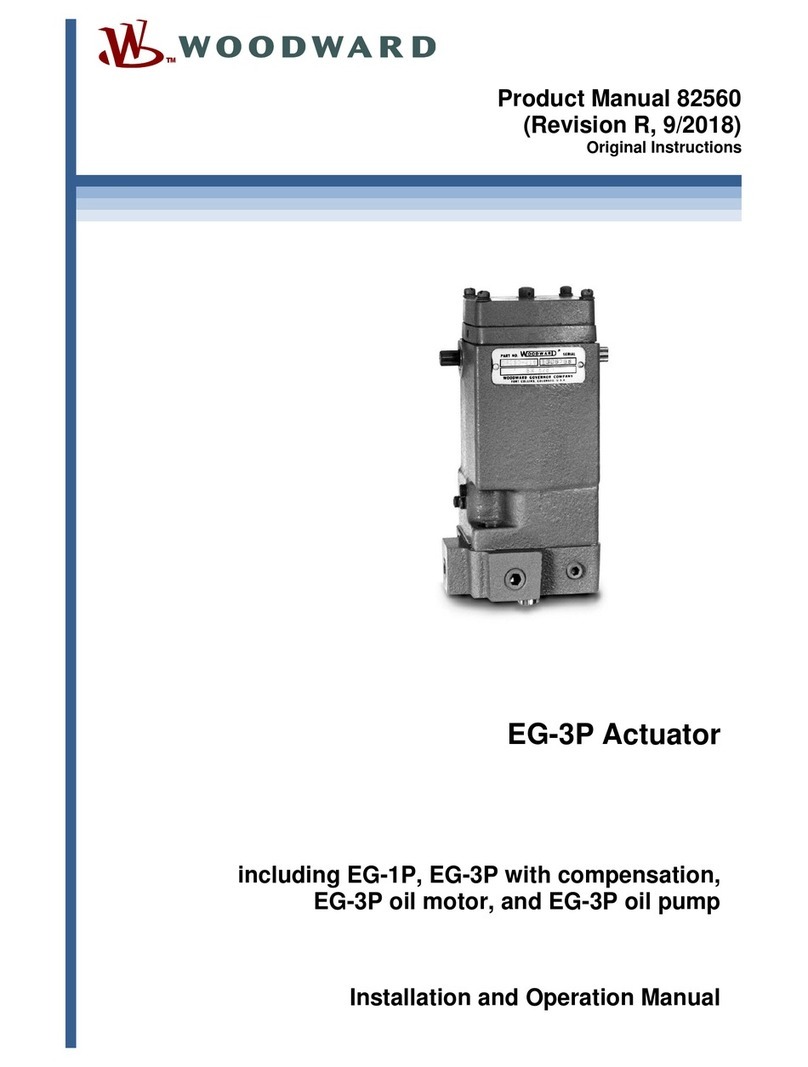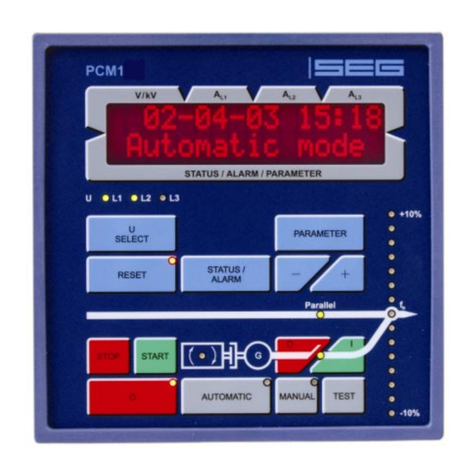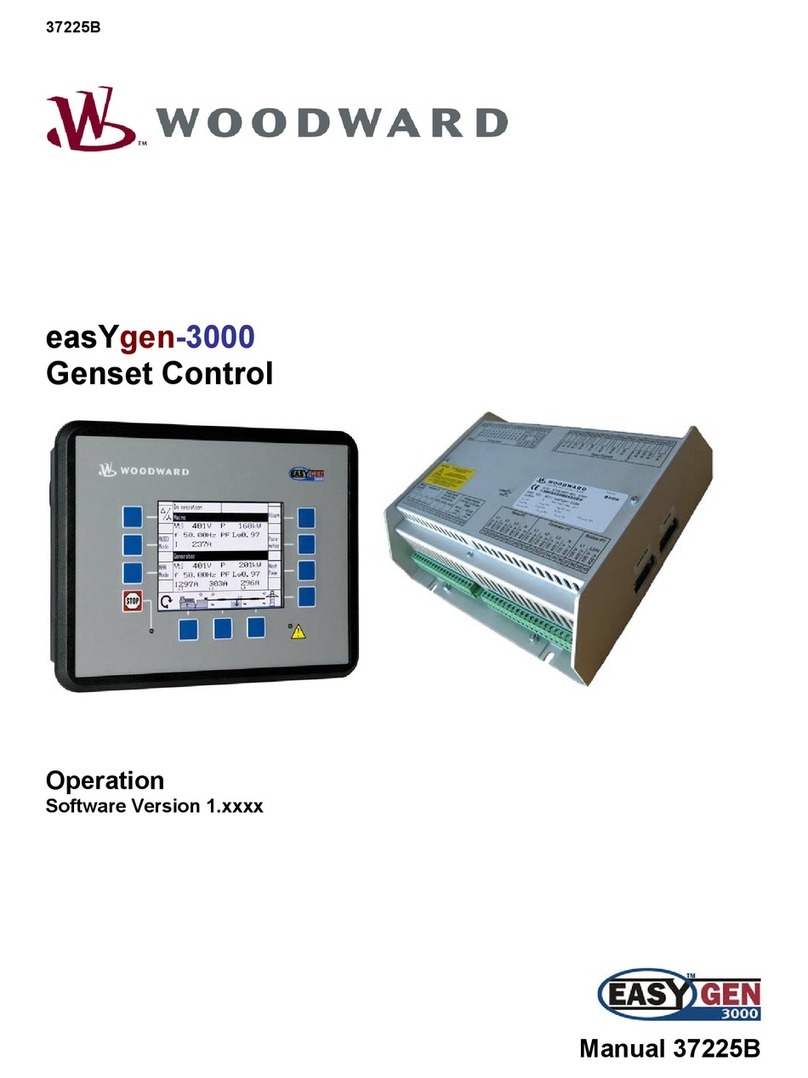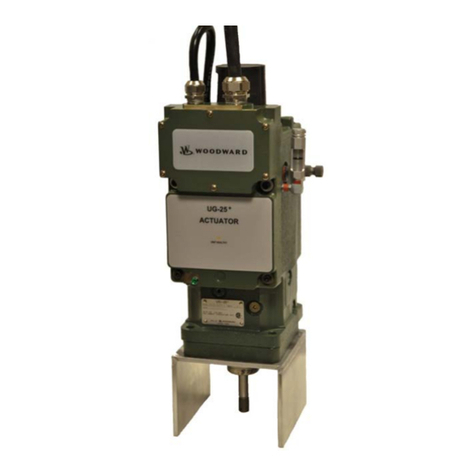
505 Digital Governor Manual 85017V2
ii Woodward
Illustrations and Tables
Figure 1-1. 505 HMI Software ................................................................................3
Figure 1-2. Digital Remote Final Driver..................................................................4
Figure 1-3. Real Power Sensor..............................................................................5
Figure 1-4a. Digital Synchronizer and Load Control..............................................7
Figure 1-4b. Digital Synchronizer and Load Control Functional Diagram..............8
Figure 1-5. DSLC Interface Wiring.........................................................................9
Figure 1-6a. Master Synchronizer and Load Control...........................................10
Figure 1-6b. Master Synchronizer and Load Control Functional Diagram...........11
Figure 2-1. Pump or Compressor Discharge Pressure Control with Turbine Inlet
Pressure Limiting.............................................................................15
Figure 2-2. Inlet Pressure Control with Automatic Synchronizing & Generator
Power Limiting.................................................................................18
Figure 2-3. Exhaust Pressure Control with Generator Power Limiting and Plant
Import/Export Limiting......................................................................22
Figure 2-4. Plant Import/Export Control with DRFD Servo Interface ...................27
Figure 2-5. Inlet Pressure Control with Isochronous Loadsharing Control in Island
Mode................................................................................................31
Figure 2-6. Import/Export Control or Exhaust Pressure Control with Isoch Load
Sharing in Island Mode....................................................................34
Figure 3-1. 505 Keypad and Display....................................................................39
Figure 3-2. Software Structure Overview.............................................................41
Figure 3-3. The Select Mode Level......................................................................42
Figure 3-4. Header Level......................................................................................42
Figure 3-5. Block Level.........................................................................................43
Figure 3-6. Debug Information Arrangement .......................................................49
Figure 3-7. OS_FAULTS Mode Information Arrangement...................................50
Figure 3-8. SYS_INFO Mode Information Arrangement......................................55
Figure 4-1. Service Mode Entry............................................................................60
Figure 4-2a. Service Mode Blocks .......................................................................61
Figure 4-2b. Service Mode Blocks .......................................................................62
Figure 4-2c. Service Mode Blocks........................................................................63
Figure 4-2d. Service Mode Blocks .......................................................................64
Figure 4-2e. Service Mode Blocks .......................................................................65
Figure 4-2f. Service Mode Blocks ........................................................................66
Figure 4-2g. Service Mode Blocks .......................................................................67
Figure 4-2h. Service Mode Blocks .......................................................................68
Figure 4-2i. Service Mode Blocks.........................................................................69
Figure 5-1. Proportional Gain Setting Effects.......................................................93
Figure 5-2. Open Loop Proportional and Integral Response...............................94
Figure 5-3. Closed Loop Proportional and Integral Response.............................95
Figure 5-4. Integral Gain (Reset) Setting Responses..........................................96
Figure 5-5. Closed Loop Proportional and Derivative Action...............................98
Figure 5-6. Derivative Setting Effects...................................................................98
Figure 5-7. Closed Loop Proportional, Integral and Derivative Action.................99
Figure 5-8. Typical Response to Load Change................................................. 101
Table 2-1. Example Summary..............................................................................14
